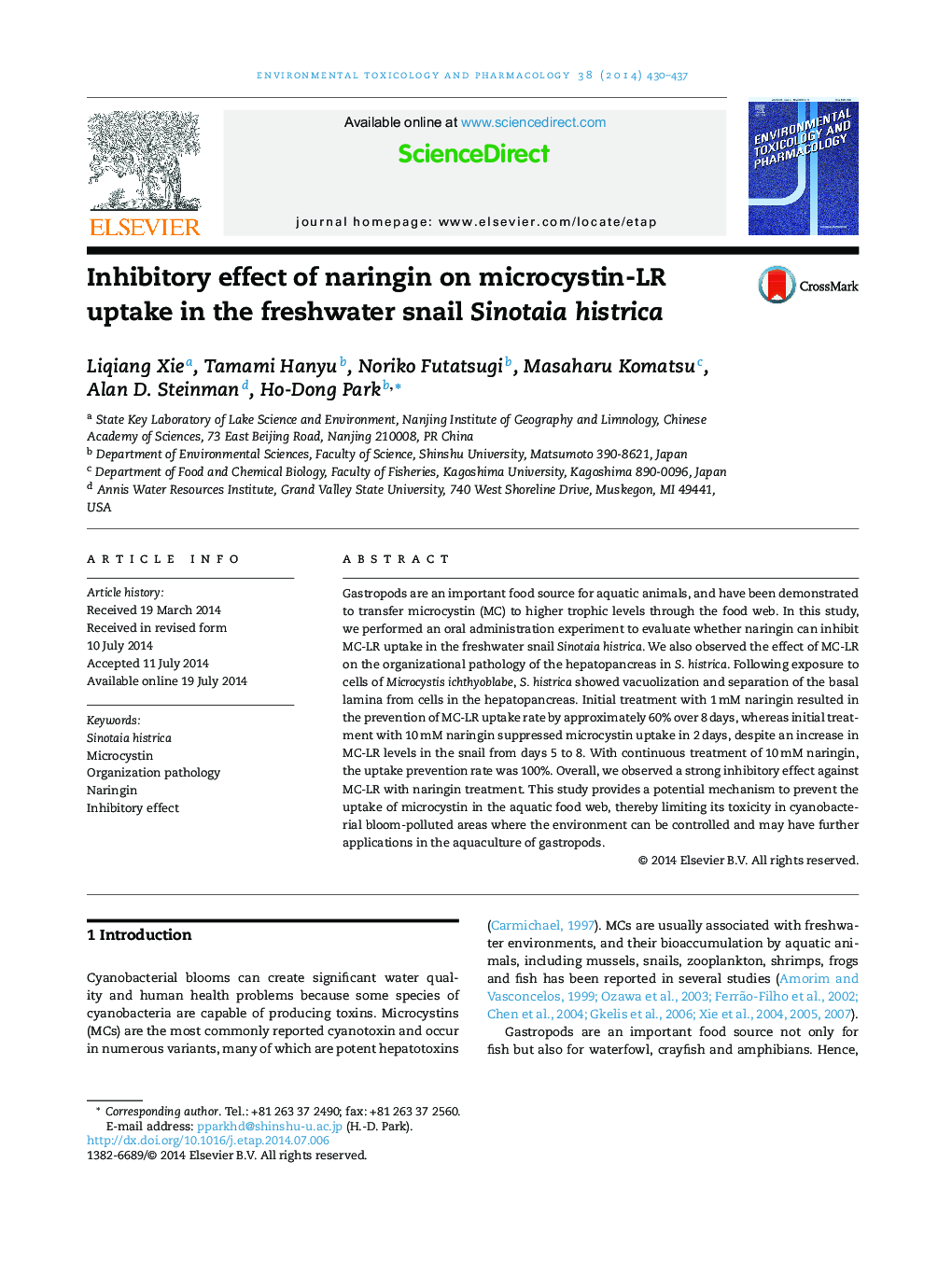| Article ID | Journal | Published Year | Pages | File Type |
|---|---|---|---|---|
| 2583601 | Environmental Toxicology and Pharmacology | 2014 | 8 Pages |
•Snail heptopancreas experiences vacuolization and separation due to microcystin.•Naringin exhibits an inhibitory effect on the uptake of microcystin in snail.•This study provides a potential method to prevent microcystin transport.
Gastropods are an important food source for aquatic animals, and have been demonstrated to transfer microcystin (MC) to higher trophic levels through the food web. In this study, we performed an oral administration experiment to evaluate whether naringin can inhibit MC-LR uptake in the freshwater snail Sinotaia histrica. We also observed the effect of MC-LR on the organizational pathology of the hepatopancreas in S. histrica. Following exposure to cells of Microcystis ichthyoblabe, S. histrica showed vacuolization and separation of the basal lamina from cells in the hepatopancreas. Initial treatment with 1 mM naringin resulted in the prevention of MC-LR uptake rate by approximately 60% over 8 days, whereas initial treatment with 10 mM naringin suppressed microcystin uptake in 2 days, despite an increase in MC-LR levels in the snail from days 5 to 8. With continuous treatment of 10 mM naringin, the uptake prevention rate was 100%. Overall, we observed a strong inhibitory effect against MC-LR with naringin treatment. This study provides a potential mechanism to prevent the uptake of microcystin in the aquatic food web, thereby limiting its toxicity in cyanobacterial bloom-polluted areas where the environment can be controlled and may have further applications in the aquaculture of gastropods.
Graphical abstractStrong inhibitory effect of naringin on the uptake of microcystin in the hepatopancreas of Sinotaia histrica (I, initial dose of naringin; C, daily dose of naringin).Figure optionsDownload full-size imageDownload as PowerPoint slide
